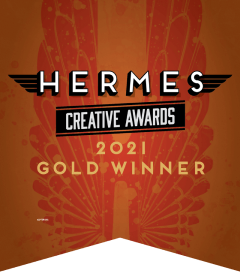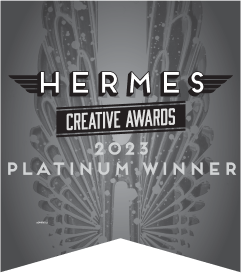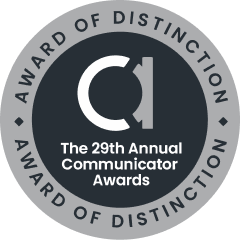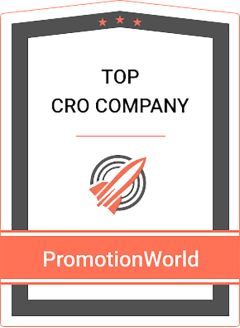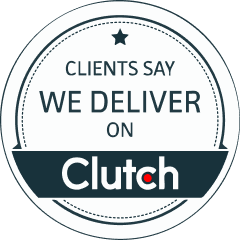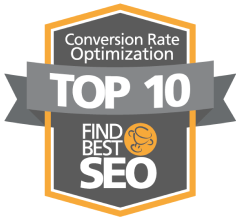Preston Bornman | Creator of Vanquish Carbon Model and Brand | Vanquish Carbon
With a diverse background of experiences, one thing has been consistent for Preston Bornman – the ability to solve problems. Join us as we chat with Preston about his problem-solving mindset, his variety of experiences, and how it has prepared him for his role at Vanquish Carbon.
Transcripts
[Laura]: Hi, and welcome back to The CMO’s Guide To Everything. Today we have Preston Bornman. He’s a Transformational Executive Management Leader with a long history of driving operational excellence and business growth. He’s the creator of the Vanquish Carbon Model, which we’ll hear more about in a few minutes. Previously he was the CMO of a defense contractor, President, COO, and CMO of the Sports Cable Network, President, COO of an upstream energy business, and an Executive Management Consultant. Preston also founded a US cable sports network and received a Bachelor of Arts in Geology and Anthropology from Southern Methodist University.
Welcome, Preston.
[Preston]: Thanks Laura. Glad to be here. Thanks for inviting me.
[Laura]: Of course, of course. For our listeners who aren’t as familiar with this space, can you give us maybe a little bit of a background, orientation, on Vanquish Carbon? How it works, why it’s so timely.
[Preston]: Sure, absolutely. Vanquish Carbon is set up to be an ESG problem solution business. We saw the world focus on reducing its reliance on fossil fuels. And when President Obama signed The Paris Agreement, it really put the United States into a foray of grossly reducing our emissions by 2050. Of course, President Trump pulled us out. So what that did actually is set the United States behind Europe and Asia. So Europe and Asia are way far in front of the United States in solving their energy transition issues. So we were started two years ago because we could see the transition coming and we knew that the US was going to need some expertise in solving the problems, and our main solution is providing high quality carbon credits, which are devices that companies can use to offset their emissions. So if you’re emitting a ton of CO2 through burning diesel in your trucks, you can actually buy a carbon credit and offset that emission, which gets you towards your goal of the 2050 emissions net zero.
And why is that important? I think that’s maybe a next logical step here, is that because Europe and Asia are ahead of us, if a company in the United States is doing business with them, they need to be cognizant of being net zero in providing products. In the US, the public companies primarily, and some private companies, are really being driven towards net zero not by the US government, but by the investors. Institutional investors, the lenders, their insurance companies. So the companies here are really being pulled into being green more than running down voluntarily, which is really what Europe and Asia are trying to do.
And so here’s a prime example of what’s really kind of going on from what our experience is. So the bigger companies know they have pretty significant emissions footprints that they want reduce, and so what they’re doing is they’re pushing down the compliance to their providers of goods and services. So if you are a barge company, a private barge company, Lauren you’re providing transporting fuel across the intracoastal canal, Exxon or someone would say, “You need to deliver that diesel green.” So even if you’re a private company, you’re not looking for capital, you’re still going to need to now comply. And so you can spend a significant amount of capex upgrading your boats, which still isn’t going to reduce your emissions, or you can do a combination of changing out your engines and buying carbon credits to reach the goals for your clients. So it’s really a timely matter, and it’s really being pushed into the US market rather than us driving the market, which is really unusual for the United States.
[Laura]: Okay. Alright. So in terms of that, who is your audience at Vanquish Carbon? When you go to do your own growth, I know you said that you are going to be promoting more after the new year, so who is your audience?
[Preston]: Our immediate target audience is actually companies that are already familiar in the space, that are already buying carbon credits. Because it’s difficult to educate someone on two subjects at once, which are what are carbon credit and then why we have to do this. It’s a lot easier to go, “We know what we’re doing, we’re just looking for a better solution.” And so our product was geared to be a better solution. Because most of the companies that are needing compliance are public companies, we have geared our carbon credits to go through Sarbanes Oxley and go through SEC standards so that we rise above every other credit that we know of in the marketplace. It’s just more reliable, therefore less risky.
[Laura]: Sure. Okay. Very good. Very good. So let’s talk for a minute about your background. You’ve got this very diverse background. ESG, cutting edge AI, tech, sports cable networks. What of that do you think has best prepared you for the role you have now?
[Preston]: Well as my wife would say, E, all of the above.
[Laura]: Right.
[Preston]: The reality is it is E, all of the above. I was a natural science major in college, geology and anthropology. Came out into the world as an Exploration Geologist, which is really analytics plus creativity plus execution plus operations. And so that base skillset can actually be applied to every known business that I’ve ever met. I mean it could be MD doctors, they do the same things. And so what happened is I became known as a problem solving person, and so I’ve been asked to join these various dispersed industries. And of course, because I love to keep learning, I jump ship and I go from oil and gas then I go to media and I launch a sports network and then I go into military AI, and then we’re doing blockchain and AI.
And so I’ve learned all these really cool technologies, but it’s really all been on blocking and tackling. What’s the problem? What’s the data tell us? How do we solve it? Now lets execute it. So really everything I’ve done is actually aligned perfectly to do Vanquish because it is problem solving, it is marketing, it is branding, it is sales. It’s basically everything I’ve ever had to do in my whole career. So as unusual as that is, it actually is … it looks strange on a resume, but it actually helps me and helps my businesses out a lot.
[Laura]: You say strange, I say fascinating. Really.
[Preston]: Thank you, fascinating.
[Laura]: So let’s go back to you’re on the cusp now of launching a pretty full-scale marketing initiative in the short term future, maybe short to midterm future. What are some of the guiding principles you’re going to implement as you move forward?
[Preston]: Well as you and I have discussed, I think the guiding principles actually go back to blocking and tackling. We really need to go back to, and I’m going back because that’s the way I do things, is we’re going to go back to the five forces of competition. And the five forces of competition, which really drive all of marketing, are the intense rivalry between competitors, barriers to entries, substitute products and services, bargaining power of suppliers, and the bargaining power of buyers. So those are the five drivers that really we have to get through to do our deal. And so once you have to start addressing all those, you have to start addressing starting with the product. What’s your product? What’s the problem you’re solving with the product? Do you have a competitive advantage? You do your competitive matrix, and are you upper right? Because you need to differentiate yourself in the marketplace for your product. Right? Who is your competition? Why are you better? Your competition is good, we’re just better.
And then you have to start going into your audience, right? Who is your target? Who are you going to call? And that goes back to the conversation we had about the right fish at the right time at the right place with the right bait. And so audience identifications are very key, especially in what we’re doing because this is obviously a B2B play. So primarily for the audience, we’ll get into just quickly, the audience is really two types of people. There’s the CEOs of the companies who really have a strategic problem. They have a strategic issue with their shareholders, with their institutional investors, with their debt holders. They’re trying to solve an esoteric strategic problem. And then you take a step down or two within the organization, and they have tactical problems, “Okay. The boss needs us to solve our carbon offsets. How? Why? How do we do this without being a cost? How do we make money on this? How do we do this as frugally as possible?”
So you really have two primary audiences and the story is mostly the same, but the details behind the story are going to change. So whereas it’d be great to come out with, “Here’s our slogan. Here it is.” It really doesn’t fit because the audiences have two different … and what we call those, by the way, are drowning man issues. So they have two different drowning man issues and the drowning man was actually created by my mentor, Michael Debarski, and it is a really simple model if you think about it.
So Laura is going on a cruise. The cruise line calls you up, you’re sitting right where you are at your office. “Hey Laura, do you want to buy a life preserver?” “Why do I need a life preserver? I’m sitting here in my office. I don’t need a life preserver.” So you go to the dock to get on the boat, “Hey Laura, would you like to buy a life preserver now?” “No, we’re fine.” You board the boat, you go to your state room, everything is good. “Would you like to buy a life preserver?” “No, I don’t need a life preserver.” Well, you hit an iceberg, “We’re still afloat. I don’t need an life raft.” But you’re getting in the water, you’re going to go, “I need that life preserver now, and I’m willing to pay whatever it takes to get it.”
So the drowning man issue for these companies that we’re seeing is that we have to have a real compliance plan. We can’t just say, “Oh yeah, we’re doing this.” No, no. We have to have rubber meeting the road and actually moving towards the target. And so the drowning man issue for the chairman is he has to have the plan and he has to be able to articulate that plan. The drowning man issue for the staff is, well, they actually have to implement it.
And they have to implement it within their budgets and try to make money. And so those are the two different drowning man that we’ve seen for the target.
[Laura]: Okay. Alright. So when you go to define your personas, in marketing we talk about ideal customer profiles and so forth, what are some of … maybe besides the drowning man, right? You’ve got the strategic problems and the tactical problems. What are some of the other things that you consider when you’re defining those that maybe people don’t think about all the time? All the time we think in terms of geography, we think in terms of demographics, and we think in terms of need. Is there anything else that you would consider when you’re sort of defining how you would create a message for someone?
[Preston]: One of the other issues that we run across is US versus international ownership. Companies that are owned by international entities need a little bit different messaging because they are actually looking at things through the other end of the glass as opposed to what the Americans are. Because the Americans are really trying to go, “How do we keep pushing this off and do as little as possible?” I mean, that’s kind of been … things are starting to switch, but that’s kind of been how it’s been. But the Europeans are going, “We’re doing this. We need to do it now. How do we get it done?” And that’s a little bit different message because there’s an immediacy to them. And so part of what you’re talking about is how do we create an immediacy on the American audiences? And part of the way we solved that in our messaging is that we are a wholesaler of carbon credits, not a retailer of carbon credits. Because we want you, the customer, to be able to take what we can sell you and mark it up and put it into your value chain.
So that’s kind of the ideal profile that we’re working on. Who in the marketplace, one, needs credits or already uses credits, and who can take the product and actually integrate it into their market and generate extra revenues off by doing it. And so those are kind of the two things that we’re shooting for today. I mean as the market matures, obviously, that’s going to change Laura. But right now that is it. It’s the drowning man issue, but it’s really the customers that can actually integrate us into their businesses, and it’s integrated in fairly seamlessly actually.
Because back to the inland barge guys, you’re transporting diesel in a barge in the inland waterways and you’re going, “Okay. Well I can make this a green load for 10 cents a gallon of diesel I burn. Well, I’m just going to check a little box here. Check if you want this load to be a green for $500.” Okay, and then that’s it. It’s easy. It’s just a line item on the ticket that goes to the customer and they just check it off. And so it makes it real easy so, “You said you want to be green. Well, here it is.”
Put your money where your mouth is. So that’s kind of a really important ideal customer profile that we’re looking for now, the ones that can actually seamlessly integrate this in to the value chain.
[Laura]: Okay. Well yeah, that makes a lot of sense. Most of what I expect you’ll be doing in the future too, in 2022, is educating customers. We talked a little bit about that. So do you have any ideas for those educational kind of campaigns?
[Preston]: Yeah. And frankly, I’m working on the nuances of that. So I write very short articles that go into LinkedIn. Some of them are just wildly economic articles that are really making a point that don’t actually talk about carbon credits. But other things that I’m doing is I’ve written a White Paper. I’ve written a program brochure, it’s on the website. And so I’m going to continue to write articles and educate people that way. We are going to start doing a little bit more PR as kind of an educational piece. We have joined the Amazon Net Zero Group, so we have committed to net zero by 2030. We’re actually net zero now. We have joined a group called Blue Sky Maritime, which is the global maritime group trying to satisfy net zero in inland waters and blue water shipping, and so we’re going to continue joining these groups. We’re actually part of the Baker Institute at Rice University. So we’re joining these groups, we’re participating, we’re helping other people solve their problems.
And at the same time, we’re slowly getting the word out of what we’re doing and why we’re different and why we’re actually better for you than the existing products. And so the education is the key and it depends upon how you want to look up … we’re different in a multitude of areas, actually like 10 areas, compared to existing carbon credits. And you can’t throw all of that at the wall at first because everyone’s eyes are going to spin in their heads. So we have to kind of start with one topic at a time or two and then kind of slowly educate them as we work down our hierarchy of what we think, and what our market testing tells us, are the most important points for the customers.
So really it’s going to be articles, panels. We’re going to start getting on panels next year. We just weren’t quite ready this year. I didn’t have enough written, I didn’t have enough of the statistics behind me. We’ve actually come up with a carbon credit rating system, which is very detailed at 21 different aspects, and we’re the only people that have it. And so we’re going to start utilizing that and putting that out too in articles. So we have to be the experts, and people have to realize that we’re the experts. So we can’t educate them just on my product, that’s disingenuous. So we want to them on the market in general. Right.
[Laura]: Yeah. So I had the same experience 10 years ago when no one knew what machine learning was, back when AI was still … well, the general public didn’t anyway.
[Preston]: People couldn’t spell AI.
[Laura]: Right. It was a whole different world back then. You would say machine learning and people would go, “What?” And I had a client, still do actually, still with us 10 years later, but they did machine learning for seismic interpretation, and so many of those first years were spent just in educational efforts. And it was always a challenge to think of new and different and interesting ways of reaching people with a message. Right? And they did, they published the technical papers and the peer reviewed journals and they did all of those things. But in terms of just getting people’s attention, I think the posting on LinkedIn was very valuable in that. Speaking everywhere was really valuable. But it took a long time for the audience to really catch up and really get what was going on. Those early evangelists sometimes have it the hardest.
[Preston]: It’s tough. And then part of the other is that we’re going to get evangelists for us. So we’re going to have third parties that we are associated with actually also professing this as part of what they pitch. So it’s not … one of the analogies I always use, if you want to buy a boat, don’t tell your wife you want a boat. Have someone else tell her you want a boat you should buy. And so I think in marketing, if someone hears it from Mary Lou over here and goes, “Hey. I’ve heard you guys are really good.” That works better than Laura saying, “Hey, we’re really good.”
[Laura]: Yeah. They influence their mentality, for sure.
[Preston]: You do need some surrogates out there preaching the gospel also, but that takes a little longer because you have to convince them. And if you’re paying them, it’s once again disingenuous. So you do have to build that trust.
[Laura]: Yeah. I will say, the effort pays off. Because here we are 10 years later and those pioneers of the field, the early evangelists, the people that come onto the scene first, they may have it the toughest in terms of education. But then when the rest of the industry catches up, which it will absolutely at some point, then they become the thought leaders and the go-to places and it’s a lot more difficult to unseat them at that point.
[Preston]: Absolutely.
[Laura]: So that does carry that advantage.
[Preston]: You do have that advantage, and that’s the way we’re dealing with the military company, the military technology. It was AI, but it was not so much doing the AI portion of it. It was that our theory behind AI is that you don’t need to just have more data to have AI, you really need to have higher quality data.
So what we were working on was much higher quality optical data so that the AI had a better basis to build its solution upon. Because in the military if you add copious amount of data, it takes too long to process to give you a real time solution.
So you have to back up the process and go, “Wait a second. We’re looking at the wrong end of the solution here. We need to go back to the beginning and put in better data.” And seismic is the same way, I mean.
[Laura]: Same way, yeah. It’s all about the training game.
[Preston]: Tighter training, better charges, better frequency on your charges, whatever it takes. Right? Better processing algorithms. And you just get better data, therefore you get a better algorithm out of it. Right.
[Laura]: Absolutely. Alright. So let’s see here, I’m just kind of looking down some of the things that we’ve talked about in the past, the bullet points here. Going back a little bit to your comment, right fish, right pond, right bait, right time. I love that, first of all. I think that’s very appropriate. What are some ways that you’ve found of effectively communicating a value proposition? A lot of times we run into business leaders who are very passionate about their products. And that’s great, they’re supposed to be. But they have a hard time distilling that down to a very clear, simple message. Because they’re engineers at heart. The more they can share with you, the more you’ll … and really in marketing, the message has to be kept simple. Right? It has to be kept simple. So do you have any recommended processes for how to distill all of that to something digestible?
[Preston]: My recommended process is you go through right fish, right place, right time. You go through your product and you come up with your messaging after you have a lot of friendlies and talk to people and find out what it is they really want and need and what’s the path going to get to. So I don’t actually even have our messaging down yet, because we’re still walking through all of these with companies here in Houston because it is the latter end of the process. And I think a lot of people, back to what you were saying is dead on, a lot of people cop out and the value proposition is in pricing. Well now you’ve just commoditized yourself, and that is not what you want to be. So the value proposition has to be, how does this solve the target’s problem and how well do you solve it?
And then how can you … like your customer is 10 years, right? That’s a great brand equity you have. It’s a repeat customer at a fair price. So you want to do that, and so part of your brand messaging has to convey what you want in the long run, which is that repeat customer. So I’m just not there yet. I wish I could. I mean I had a friend of mine call me up and go, “Hey, I need a one line brand messaging to get your story across because it’s just really complex.” And I went, “Good luck because I’m not there yet. So sorry, but I’m not going to jump out and something up that is not right.”
It’s going to be something simple, obviously, because you and I both agree that simple is the way to go, and it’s going to be something that makes sense to the customer when they read it, not makes sense to me. Because there are a lot of people that write really cool things, but it’s like, “What the heck does that mean?” If you’re not an insider, you don’t understand it. But that’s all part of the branding and messaging, of course. And branding, of course, I really haven’t even gone through the branding. But I like brands that actually are what they are, which is why Vanquish Carbon is Vanquish Carbon. Because what do we do? We remove carbon. So we vanquish it. So I’m a big proponent of logos that actually are what they are, like y’alls. It is what it is. Right? We are what we are, Vanquish Carbon. So I like that a lot, and I didn’t want anything abstract or obtuse.
Google spent a lot of money, and so did Amazon, telling people, “Oh, we’re a place for books.” And then they spent a lot more money saying, “Oh, we’re the place for everything else.” Because Amazon doesn’t mean anything. It’s a river or a tribe in Greek mythology. So they had to create something … so names, and back to your thing, names have to be what they are and the messaging has to convey the value to your customer. Because really, and you know this as well as I do, we cannot lose fact that it’s really all about them and not about us. So the message has to be about the customer, not Vanquish Carbon are the best credits in the business. Well that’s about me, and that’s wrong.
It needs to be solving your problem or something. Something corny, but it’s really about them. And so we have to always remember that, because I see it all the time. I mean you can get online, you can see ads coming across Facebook or whatever, and the ad is about them. It’s really not about you. It really needs to be about you. How are we meeting Laura’s needs?
[Laura]: Absolutely. That’s something we talk about all the time among our team, make the customer the hero of our story. Whatever story we’re telling, whatever we’re doing, the customer is the hero of the story. We are not the hero. It’s not about us. It’s not about our brand. The customer is the hero.
[Preston]: That’s exactly right. You’re dead on. It’s also when you have competitors, which you have and we have, they’re really good. They know what they’re doing, we’re just better, and let me tell you why. So you never put anybody down because you never know when they’re going to buy you. “Oh, Laura. We’re buying your company today, but by the way you slammed us a month ago so you’re out.”
[Laura]: Yeah. That’s no good.
[Preston]: Yeah. You got to be careful about that.
[Laura]: Right, right. So just in closing, we’re running a little short on time here. So last question, I love to ask this question. I’m a voracious reader, I love reading, I love learning. What’s the last book you read, business or marketing book that you read, that you would really recommend?
[Preston]: I actually have two.
[Laura]: Ok, great.
[Preston]: One of them I swiped from my daughter. It’s called Extreme Ownership, it’s how US Navy Seals lead and win. And so it’s really about they put pen to paper of how I think that leaders have to own what goes on. You have to actually be a leader. There is no blame. If something goes south, it’s your fault. You take responsibility. Great book, short read, I highly recommended it. And the other piece that has to go with that is that … and it’s another great book, it’s by Bob Goff. It’s called Everybody Always: Becoming Love in a World Full of Setbacks and Difficult People. And so you combine what Bob Goff believes with extreme ownership, and I think he’ll make anyone who reads those two a much better leader.
Because when I started out, I had the patience that I kept in a thimble. And after reading Bob, I have a little bit larger bucket now and so I think I need to continue increasing my bucket. But being who I am patience, just in my natural attributes, was not there. And so I could lead and I could do these things, but I had very little patience for the people under me. And so Bob Goff really helps put that all in perspective, and so combining the two I think is really a key. So I highly recommend those two and they’re both, you can get them on Amazon. Speaking of Amazon, you can get it on Amazon.
[Laura]: You can get them on Amazon. Fantastic. I will definitely pick up a copy of both of those.
For sure. Well, thank you so much for your time today Preston. I super appreciate having you on the show. It was a fascinating session.
[Preston]: You’re welcome. Thanks Laura. I appreciate being here.
[Laura]: Alright, very good. Thank you very much.
Thanks for joining us today. Don’t forget to subscribe, rate, and drop us a review on iTunes. If you enjoyed this episode, I would love to hear from you. Tag me on Twitter, @cmogtepodcast, and let me know what you think about the show and if there’s any topic you’d like to hear about in the future. And until next time, this is Laura Cuttill, your host from The CMO’s Guide to Everything.








